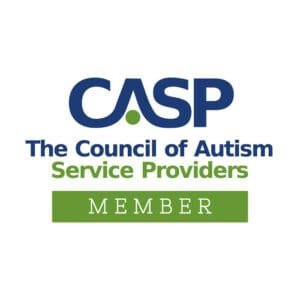Autism Special Needs Checklist for Kids Aged 6 – 12
When you have spent a considerable amount of time raising a child with Autism Spectrum Disorder (ASD), your family may already have a well-established routine centered on the child’s unique symptoms and needs. From pre-school learning and playtime to therapy sessions and other planned interactions, there is likely to be a certain lifestyle that all of you find comfortable. However, by the time your child turns six, you may have to introduce them to several new and exciting opportunities and challenges related to a group learning environment. With the right plan and support, your child will not only love the new routine but also flourish in the academic and social situations presented during the early school years.
The Applied Behavior Analysis (ABA) therapy experts at AB Spectrum offer a few suggestions for helping older kids with Autism thrive.
7 Steps to Help Children with ASD Succeed in Elementary School
Transition planning is a critical step to help your child with ASD make the most of their elementary school years. Here are some steps that will allow them to ease into group learning and feel comforted and supported through these years.
Tap into Support Systems at School: As per the Individuals with Disabilities Education Act (IDA), children with an Autism diagnosis are eligible for the Individualized Education Program (IEP) as part of additional services at their local school district. IEP typically addresses behavior, sensory concerns, and speech and language, and helps your child get extra support through a classroom aide, during breaks, or through designated social skills groups.
Add Technology to the Mix: Whether it is educational apps, computer programs or games, or assistive devices, technology can be a great friend to children with ASD. Choose from a variety of apps and digital media that use fun and engaging content for improving verbal and social skills, encouraging and rewarding good behaviors, increasing focus, and reinforcing the skills that the child learns in both, school and therapy sessions.
Plan Social Activities: Since socializing may not come easily to children with ASD, it may translate into added stress and struggle in a school environment. Planning play dates and other extracurricular activities with peers will help your child practice their social skills, as well as make new friends.
Encourage Physical Activity: Enroll your child for some type of physical activity that they enjoy or teach them yourself. Regular physical activity will not only prevent childhood obesity, but also improve your child’s strength, balance, coordination, and body awareness. Depending on the activities you choose, you may also notice other benefits, such as enhanced focus and attention, reduced challenging behaviors and increased self-stimulating behaviors.
Address Emotional Needs: At times, the school environment could make your child feel isolated, sad, or angry. Keep an eye out for anything that indicates that your child is not comfortable at school. Decreased appetite, lack of desire to attend school, unexplained crying, lack of sleep, are all classic signs that your child may be lonely, depressed, or a victim of bullying. Talk to your child frequently about their experiences at school, check on their satisfaction with the group learning environment, and use role-play to discover any issues that they are unable to vocalize. Report issues (if any) to the teachers, counselors, or other trusted authorities in order to address them immediately and appropriately.
Prepare for Puberty: Children with ASD may experience the same emotions and confusion upon reaching puberty as neurotypical children do. Talk to your doctor about what to expect as your child matures and reassure your child that the changes that come with puberty are a normal aspect of growing up. Sensitize your child about their private parts, inappropriate touching, proper dressing, expected physical changes, and other aspects related to hitting puberty.
Find Support for Yourself: While parenting a child with Autism, it is important to have a support system for yourself as well. Connect with peer parents who understand the day-to-day challenges of nurturing a child with ASD, find a local support group, or join any online communities that exchange anecdotes and advice.
Explore the Best ABA Therapy Options at an AB Spectrum Clinic near You
At Autism and Behavior Spectrum (AB Spectrum), we specialize in the Reggio Emilia ABA therapy approach and create customized ABA therapy plans for children with Autism. Our structured programs aim to improve the child’s function and independence and help them succeed in their academic endeavors. Our team of experienced and qualified Board-Certified Behavior Analysts (BCBA) and Registered Behavior Technicians (RBT) design and deliver tailor-made ABA curriculum based on every child’s unique needs and treatment goals. We focus on Natural Environment Training (NET) and use a variety of positive reinforcement techniques for reducing developing skills and reducing challenging behaviors in children with ASD. This includes motor skills, social skills, verbal skills, self-care abilities, and critical life skills.
Explore some of the best ABA therapy options at one of our Autism treatment centers in Chesterfield or St. Charles, Missouri. We also offer in-home ABA therapy throughout St. Louis, Missouri.
Get more tips on transition planning and ABA therapy interventions that can help your child thrive during the elementary school years and beyond. Call 314.339.7732 to speak to one of our experienced ABA therapy experts today. You can also book a no-fee consultation at one of our ABA therapy clinics near you.







